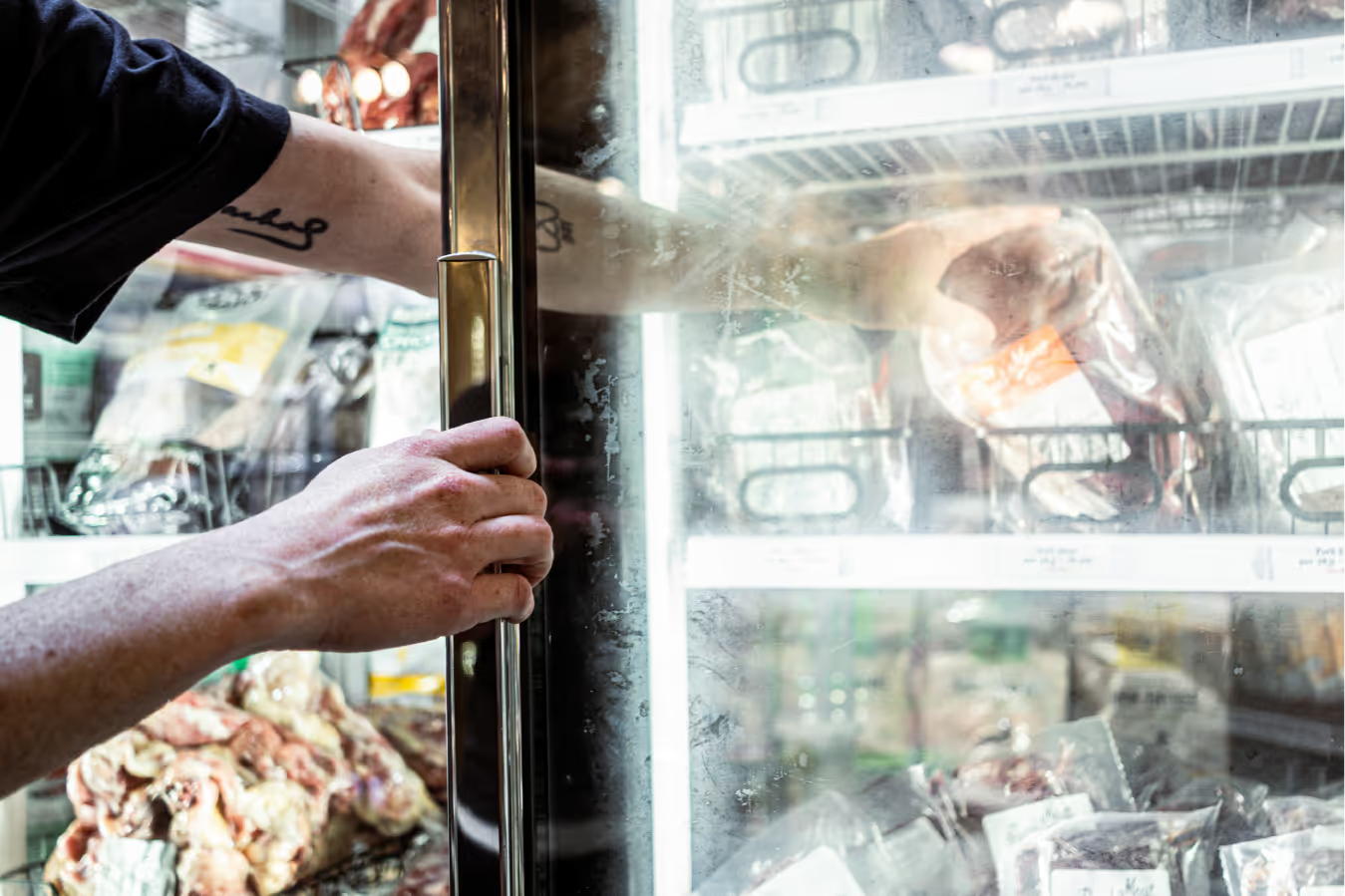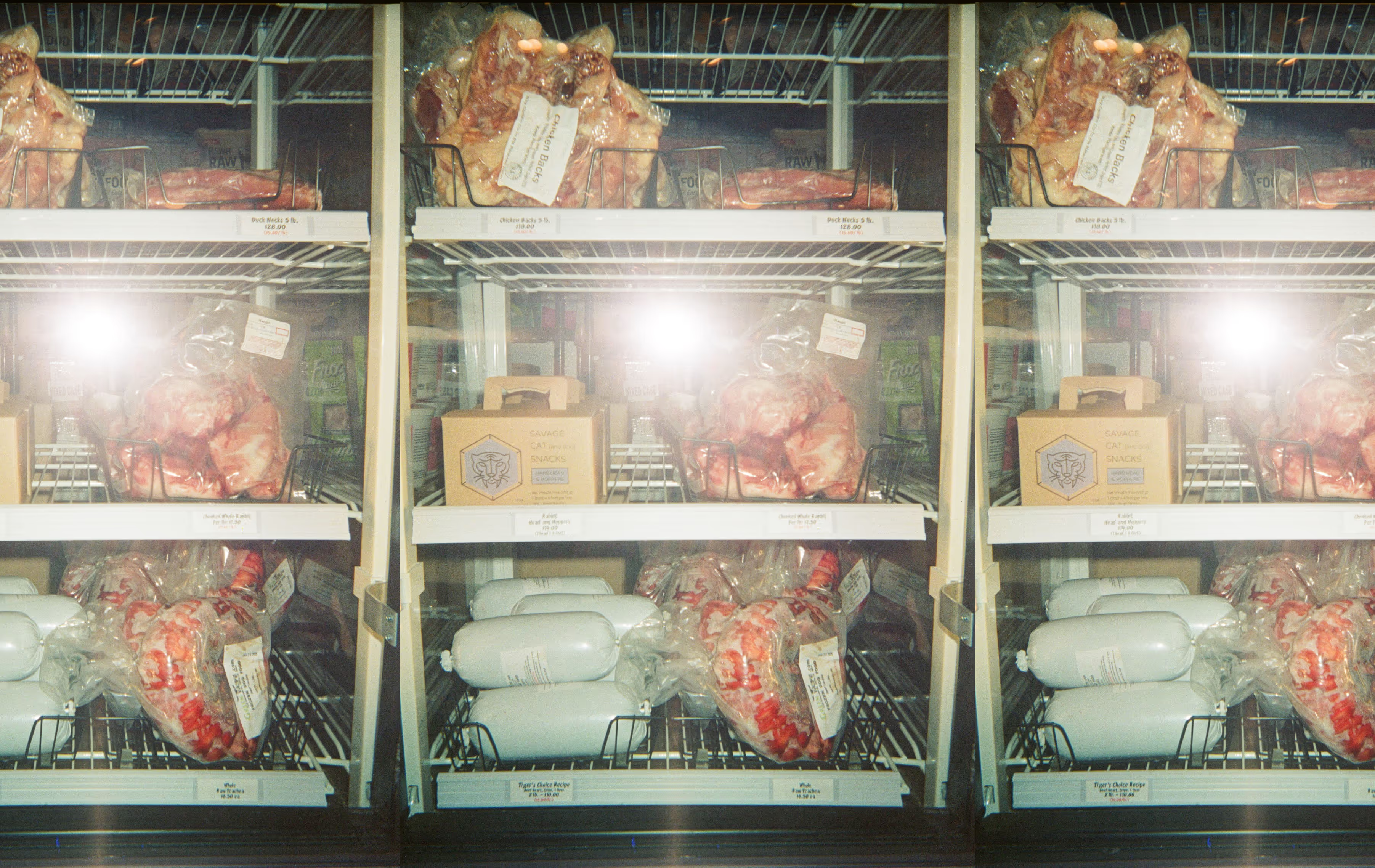Raw 101
The Basics of Going Raw


Sure, feeding raw can cost a bit more upfront, but the payoff is huge. Most people see fewer vet visits and happier, healthier pets.
Some of the biggest wins include:
• Naturally cleaner teeth and gums from the higher protein lower carb food
• Softer, shinier coats and healthier skin
• Smaller, less smelly poops (you’re welcome)
• A stronger immune system
• Better digestion and absorption of nutrients
• More energy
• Easier time dealing with food sensitivities and allergies
Basically, you will spend less time worrying about what is wrong and more time enjoying your pet being their best self.
Raw food is indeed raw. So how can raw food be safe for pets?
• Biologically: Dogs and cats have very different physiology to us humans. They have very acidic stomachs, and specialized shorter GI tracts. Both of these adaptations keep bad bacteria at bay while still being able to utilize high meat content diets efficiently.
• Best practices: Raw pet food companies tend to go above and beyond standard industry practice. Safety starts at the farm where livestock are carefully raised and supplied to our brands. Our brands know this food is intended to be fed raw so it is prepared in USDA facilities, often processed frozen to keep food its very freshest.Companies will test batches for the most common bad bacteria strains, E.coli, Salmonella, or Listeria before releasing them to our store.
• Extra safety: Some companies use extra safety measures to ensure raw safety. These include High Pressure Processing or HPP, bacteria phages, or lactic acid washes to further ensure the bad bacteria are killed. HPP is the most common of these measures and many of our brands do this extra step. There is good evidence HPP also inactivates viruses.

There is more than one way to go raw, and what works best depends on your pet, your lifestyle, and how hands-on you want to be.
• Pre-mades: These are complete and balanced diets that come in easy pre-portioned patties or medallions or scoopable options. They already include the correct ratio of muscle meat, organs, bones, veggies, oils, and supplements. All you have to do is thaw and serve. Pre-mades are great for cats, small dogs, or anyone who wants the benefits of raw feeding without the prep work. There are even bulk box options for those with large or multi dog households.
• Components: This approach is a little more DIY. You pick and mix your own meats, organs, bones, veggies, and oils to build balanced meals. Meats can be ground or whole parts. It takes more effort, but it can be more affordable, especially if you have multiple pets. Think of it as meal prepping for your furry family.
Components can be mixed with base mixes to complete and balance the diet to takeaway some of the guess work. Components can also be added to pre-made diets to add variety, encourage chewing, or reduce cost. These diets work best for dogs whose meals are a bit easier to balance out than our kitty friends.
Switching your pet to raw can happen fast or slow because every animal is different. Some people jump right in after a short fast, while others mix raw meat into their pet’s regular food and slowly increase the ratio until it is fully raw. Take your time if your pet is sensitive or picky. Cats can take a particularly long time to convince so patience is crucial.
• Mix it up- Once feeding raw, remember variety keeps your pet healthy and interested.Proteins, brands and components can all be rotated, or mixed.
• Handle raw meat safely- just like you would for yourself. Wash hands, bowls & surfaces with warm soapy water. Use stainless steel or other non-porous materials for feeding.
• Thawing- Best practice is to thaw 3-4 days worth of food ahead of time. Never microwave raw food to thaw it. Use warm, or room temperature water to speed up thawing in case you forget. Fish oils and other sensitive components should also be stored in the fridge.
• Bones- Cooked bones should never be fed. Raw bones can be safe for pets and make great natural tooth brushes. Larger tends to be safer. Always watch your pet the first time they chew raw bones to ensure they are eating them appropriately. Very large bones can be refrozen for a later chew time.
Trust your instincts. If something smells off, toss it. If your cat or dog won’t eat it, return it. Raw food will usually keep up to four days in the fridge.
Only when they are cooked. Raw poultry bones are soft and rubbery making them safe for chewing. In fact they are one of the best options for natural teeth cleaning.
Unlikely. Dogs and cats have short, highly acidic digestive systems that can handle bacteria way better than we can. Plus raw companies go above and beyond to ensure safe production, knowing their foods will be fed raw.
Nope. That's like saying crackers clean our teeth. Carb heavy foods stick to pet’s teeth fueling bacterial growth. The high protein low carb ratios of raw diets help keep foods from sticking, starving bacteria. In addition, crunching on bones or whole-food chews scrapes away buildup, keeps their gums healthy, and makes their breath smell a whole lot better.
Going raw is not complicated, it is just closer to what your pet’s body expects. Start simple, stay curious, and do not be afraid to ask for help. Your pet will thank you with cleaner teeth, better poop, and endless happy chaos.
